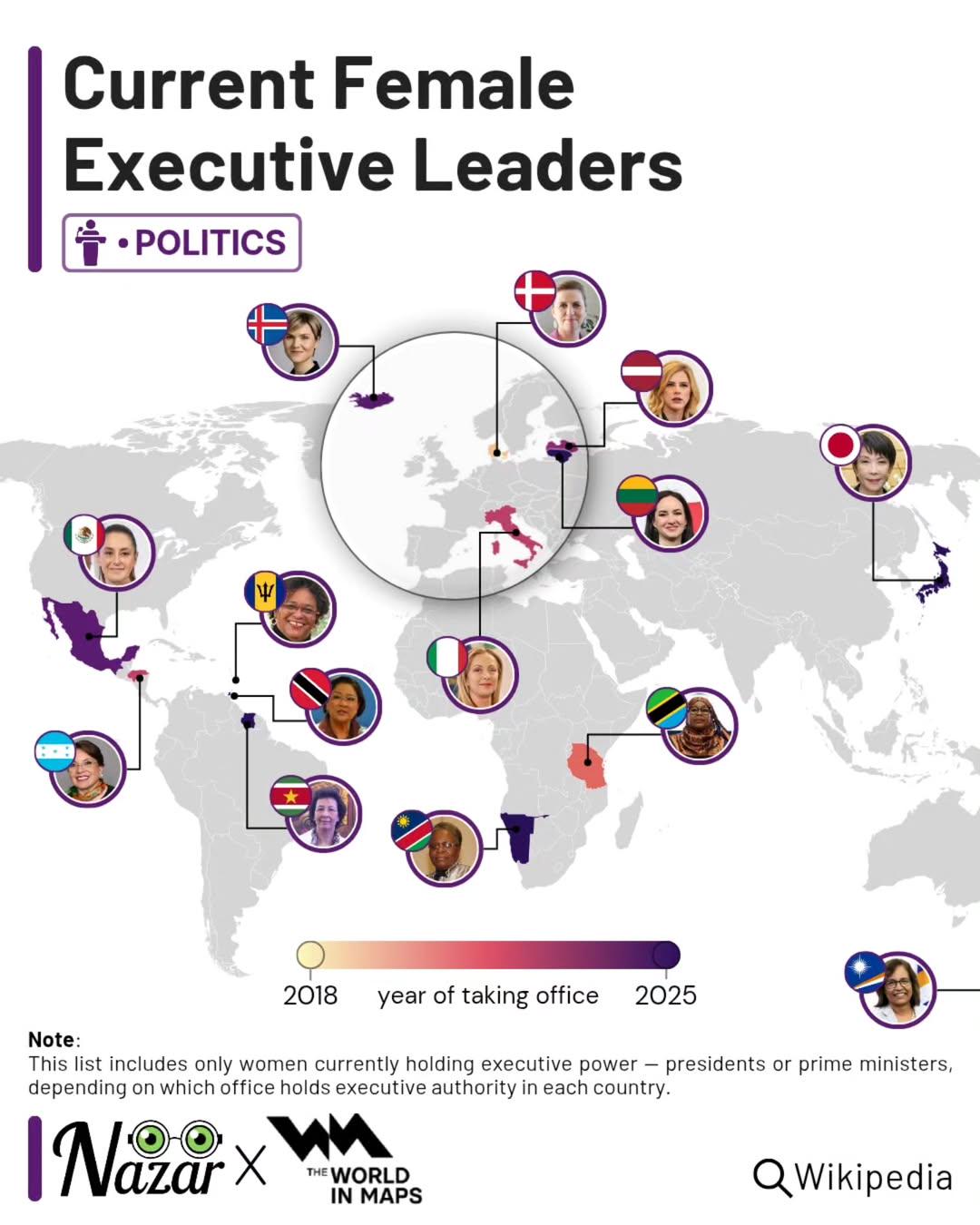Current Female Executive Leaders Map


David Chen
Data Visualization Specialist
David Chen is an expert in transforming complex geographic datasets into compelling visual narratives. He combines his background in computer science ...
Geographic Analysis
What This Map Shows
This map illustrates the distribution of female executive leaders across various regions and countries, shedding light on the gender representation at the highest levels of corporate leadership. By visualizing this data, we can easily identify areas where women are breaking barriers and making significant strides in leadership roles compared to those where gender disparities remain pronounced.
Deep Dive into Female Executive Leadership
The topic of female executive leadership is not just a matter of numbers; it reflects broader socio-economic trends, cultural attitudes, and the ongoing struggle for gender equality in the workplace. As of 2023, women hold approximately 29% of senior management roles globally, according to various studies. This is a notable increase from previous decades, yet it still highlights a significant gap when compared to their male counterparts.
Interestingly, the rise of female executives can be attributed to several factors, including the push for diversity and inclusion initiatives within companies, changing societal norms regarding gender roles, and a growing awareness of the benefits that diverse leadership brings to organizations. Numerous studies have shown that companies with more women in leadership positions tend to outperform their peers in profitability and productivity, making a compelling business case for promoting gender diversity.
However, the progress is uneven across different regions. For instance, Scandinavian countries like Norway and Sweden lead the way with women occupying over 40% of executive management roles, thanks in part to progressive policies and cultural support for gender equity. In stark contrast, regions such as the Middle East and North Africa lag significantly, with female representation in leadership roles often below 10%.
This disparity raises important questions: What barriers are preventing women from achieving leadership roles in certain cultures? Are there specific industries where women are more likely to ascend to executive positions? Have you noticed that sectors like technology and finance still struggle with gender parity at the top?
One of the most striking aspects of female leadership is the variation in the types of industries where women are succeeding. For example, sectors such as healthcare and education typically have higher percentages of female leaders, whereas fields like technology and engineering still show a significant lack of representation. This suggests that cultural perceptions about certain professions may influence women's opportunities and career trajectories.
Regional Analysis
Looking at the map, North America exhibits a relatively high percentage of female executives, particularly in the United States and Canada. Companies like General Motors and PepsiCo have made headlines for their female CEOs, showcasing a shift in corporate culture. However, even within this region, disparities exist. For instance, while urban areas tend to have more female executives, rural regions may still struggle with entrenched gender stereotypes.
In Europe, the Nordic countries stand out as exemplars of gender equality in leadership. Countries like Iceland and Finland not only have policies aimed at increasing female participation in the workforce but also boast a societal structure that supports work-life balance, making it easier for women to pursue career advancement. Conversely, Southern European countries like Italy and Spain show lower percentages of female executives, indicating that cultural norms may still be holding back progress.
Asia presents a mixed picture. Countries like the Philippines have a higher representation of women in executive positions, often attributed to a cultural respect for female leadership. On the other hand, countries like Japan and South Korea face significant challenges, as traditional gender roles continue to dominate the corporate landscape, resulting in a much lower percentage of female leaders.
Significance and Impact
Understanding the landscape of female executive leadership is crucial for several reasons. First, it highlights the ongoing challenges women face in achieving equality in the workplace, reminding us that while progress has been made, much work remains. The presence of women in leadership roles not only affects organizational culture but also influences the next generation of women leaders, creating role models and paving the way for future advancements.
Moreover, the implications of increasing female representation in executive positions extend beyond the corporate world. Studies have indicated that diverse leadership teams make better decisions, leading to more innovative solutions and improved company performance. As we look toward the future, it is clear that fostering gender equality in leadership is not just a moral obligation but a strategic advantage for organizations worldwide. The trends point to a slow but steady increase in female leadership, with projections suggesting that by 2030, women could hold as much as 35% of executive roles globally if current trends continue.
In conclusion, this map does more than display statistics; it tells a story of progress, challenges, and the vital need for ongoing advocacy for gender equality in leadership positions. As we navigate this complex landscape, we must continue to support initiatives that empower women and promote diversity at all levels of corporate leadership.
Visualization Details
- Published
- October 21, 2025
- Views
- 20
Comments
Loading comments...